|
Grandma's Sage Tea
|
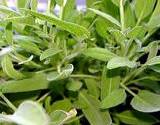 | 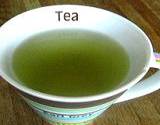 | 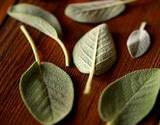 |
Sage originated on the island of Crete but now thrives in the United States. Its botanical name, salvia officinalis, is derived from the Latin word, salvus, meaning, "healthy," and refers to the plant's curative powers.
Sage's strong scent, reminiscent of camphor, is particularly noticeable on sunny days, because its essential oils are drawn out by the sun and evaporate into the air. The high levels of these essential oils, its bitters, which stimulate digestive secretions, and its tannins, which improve resistance to infection, give sage its antiseptic and astringent properties. Which also makes sage an excellent gargle for sore throats and gums.
Caution: If you are pregnant, do not use a medicinal dose of sage in any form. As a culinary herb, however, sage is safe.
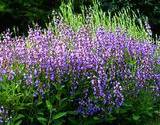 | 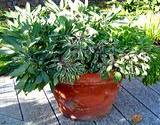 | 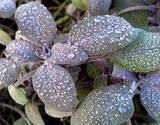 |
Sage Medicinal Tea Recipes
Basic Sage Tea Recipe
Pour 1 cup of boiled water over 2 teaspoons of fresh or 1 teaspoon of dried sage leaves. Cover and steep for about 10 minutes and strain. Make sure that the water is not boiling when you pour it over the leaves, otherwise, the potent essential oils contained in the sage will vaporize. Drink 1-2 cups of the tea daily, or use the warm infusion as a gargle. Sweeten the tea to taste with maple syrup or honey. Click here to read about the amazing benefits of honey .
Sage Tea Recipe Relieves Excessive Sweating
- 1 ¼ ounce sage leaves
- 2/3 ounce horsetail
- 1/3 ounce valerian root
Pour 1 cup of hot water over 1 ½ teaspoon of this mixture and steep covered for about 15 minutes. This tea will reduce nervous perspiration and prevent excessive night sweats when taken at bedtime.
Sage Tea & Gargle Recipe Relives Cold, Sore Throats, and Cold Sores
- 1 ounce sage leaves
- 3/4 ounce fennel seeds
Pour 1 cup of boiling water over 1 1/2 teaspoon of this mixture and steep. Use as a gargle for flu and inflamed throat. Drink as a tea for any infections of the mouth and throat. The fennel gives the tea a sweet, mile, licorice-like flavor. Click on link to enjoy more fennel tea recipes and remedies .
Appetite-stimulating Medicinal Tea
- 1 ounce sage leaves
- 1 ounce peppermint leaves
- 1 ounce lemon balm leaves
- 1 ounce bitter-orange peel
Pour 1 cup of boiling water over 1 ½ teaspoon of this herb mixture and steep. This tea stimulates the appetite and acts as a general strengthener. It is tasty even if you don't sweeten it. Click on link to read more peppermint tea recipes and remedies .
Caution Never give herbal tea with peppermint to children. The menthol may have an adverse reaction!
Medicinal Uses for Sage Tea
Sage contains abundant exxential oils with thujone, cincole and camphor. These provide it with the mucus-thinning and antiseptic properties that make it ideal for a gargle, wound dressing and vaginal rinse.
Sage's bitter constituents, tannins, flavonoids and flavone glycosides relieve digestive difficulties with their appetite-stimulating effects and work to strengthen the constitution overall.
Sage also contains estrogen-like substances that help ease menstrual and menopausal complaints.
Relieves inflamed throats and sore gums
Sage tea makes an excellent rinse and gargle for all infections of the mouth and throat because of its disinfecting of a sore throat. It will also soothe painful, inflamed gums, canker sores and irritated larynx and vocal cords.
Relieve menstrual and menopausal difficulties
For those with irregular bleeding or extremely light periods, drinking sage tea will make a difference. The tea also helps alleviate some of the difficulties of menopause, such as hot flashes and excessive sweating. Read more information for natural menopause remedies .
Relieve excessive sweating
Sage tea reduces secretions of the sweat glands and thus can alleviate night sweats, hot flashes during menopause and stress-related nervous perspiration. Drink 3 cups daily, preferably after meals, save 1 cup for bedtime if you are suffering with by night sweats. Check with you physician first to make sure the night sweats are not a symptom of any disease.
Remedy for milk production
Sage inhibits milk production by the mammary glands. Drink 1-2 cups of sage tea daily for a few days after your baby is weaned to help stop the flow of milk.
Sage bath for skin disorders
If you have itchy, weepy skin eruptions that do not heal, a bath containing a wound-purifying, astringent sage infusion may help. Steep 5 tablespoons of dried sage leaves in 1 quart of water for 20 minutes. Strain the infusion into the bathwater. Make sure you take this bath 2-3 time weekly.
Would you believe a breath freshner?
Fresh sage leaves have been used traditionally as a breath freshener as a folk remedy for many years. Pick a leaf off a plant, and use it as you would use a toothbrush. Rub the leaf over your teeth and tongue. This simple procedure will cool and refresh your mouth and help sweeten our breath as well..
DISCLAIMER:
The statement's made here have not been approved by the Food and Drug Administration. These statements are not intended to diagnose, treat or cure or prevent any disease. This notice is required by the Federal Food, Drug and Cosmetic Act.
Return from Sage Tea Medicinal Recipes to Grandma's Medicinal Teas Guide
Return to Grandma's Wisdom Home





